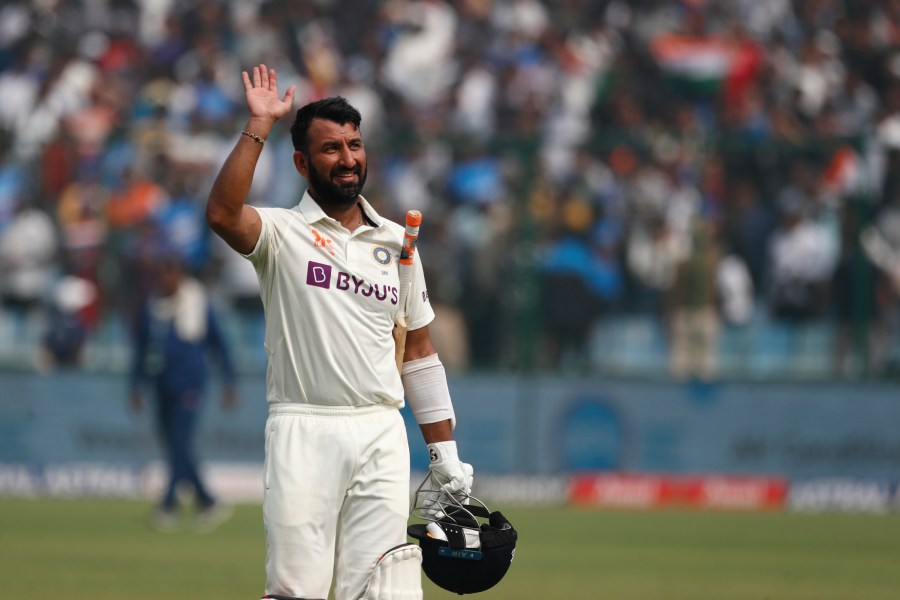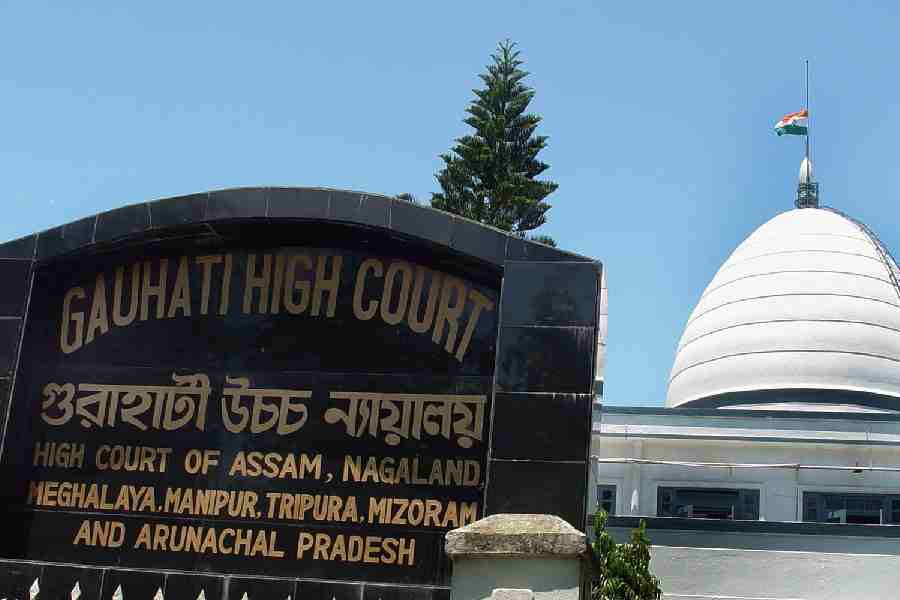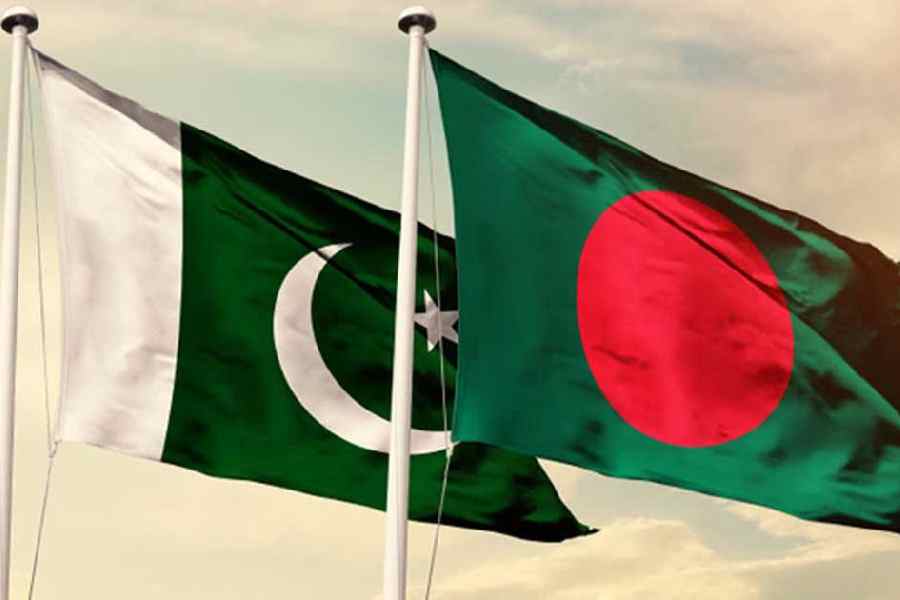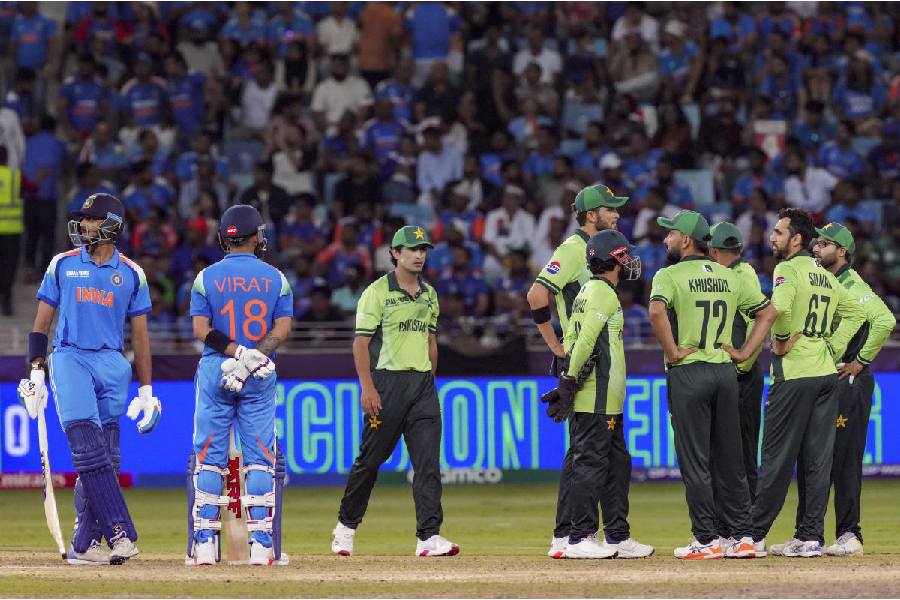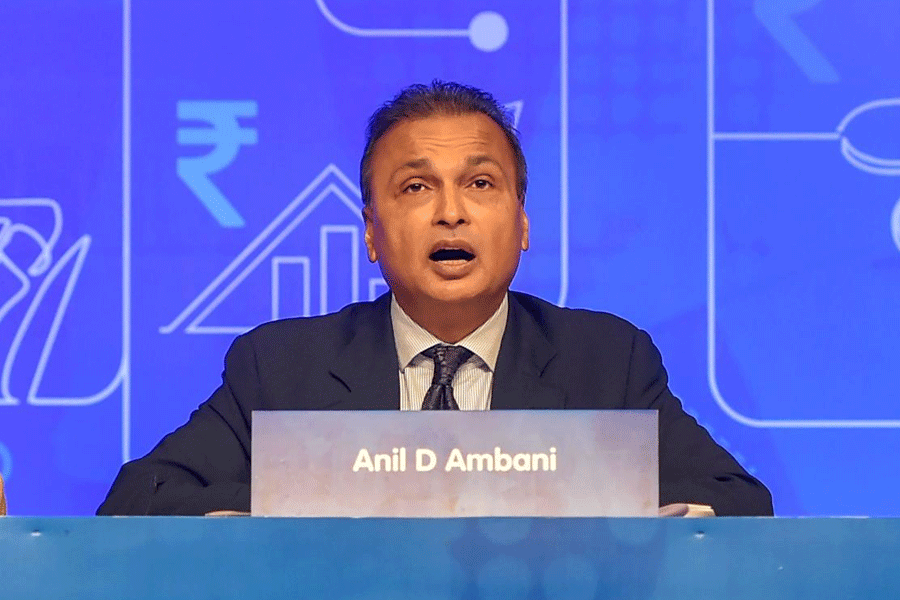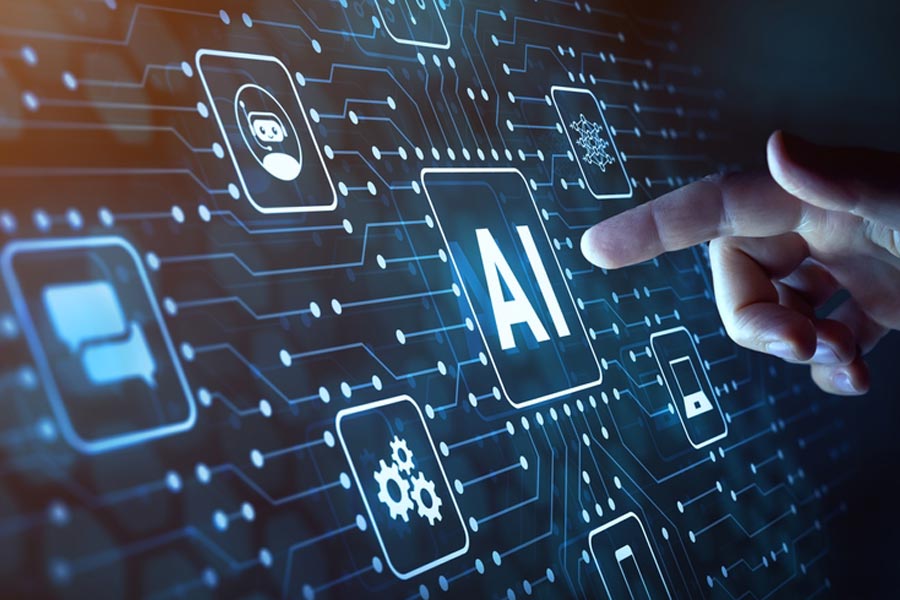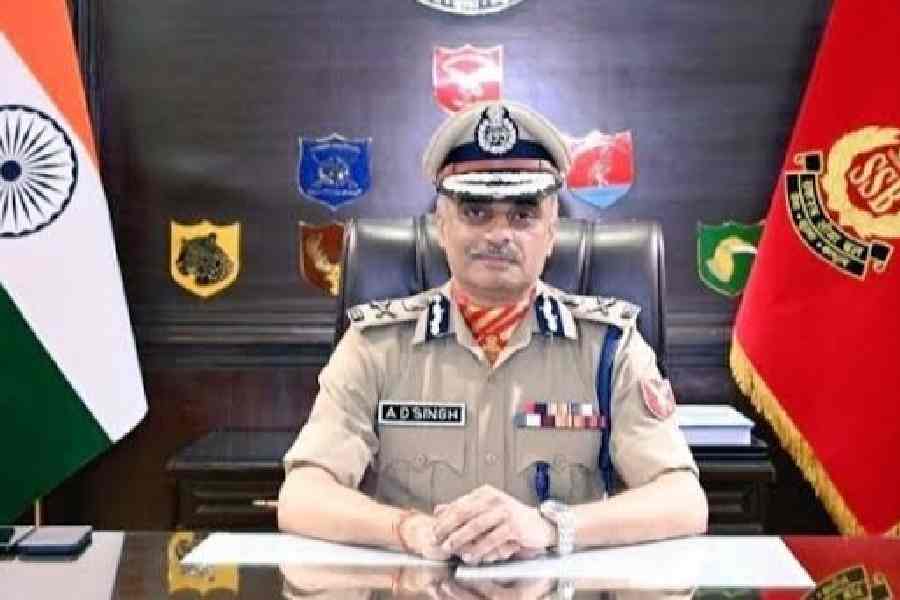 |
| Scientist Bikash Sinha is surrounded by young science enthusiasts at Sabrakon village, Bankura district. Picture by Sanjoy Chattopadhyaya |
What is the Higgs Boson?
What do we achieve from its discovery?
Did a single big bang or several small bangs create the universe?
What was there before the Big Bang?
These questions didn’t come up at the high table of pundits discussing particle physics but were fired by the children of Sabrakon, a Bankura village where gunfire between security forces and Maoists in a nearby conflict zone rang through the night until three years ago.
Bikash Sinha, the Homi Bhaba professor at the Department of Atomic Energy, and Premomoy Ghosh and Tapan Nayak, scientists at the Variable Energy Cyclotron Centre (VECC), Salt Lake, visited Sabrakon High School on December 21 and were delighted to satisfy the curiosity of 250-odd children on advanced physics.
Rajababu Rajak, 17, was in the audience though he was not a student of science.
He had to give up his favourite subject, physics, to pursue vocational training at the Sabrakon ITI after Class XI because the course in electrical engineering could land him a job. Plus, the training is cheaper and affordable. He showed the scientists a paper he had written on Black Holes.
“My father is a washerman. I have two sisters. He couldn’t have taken the burden to bear the cost of my education,” he shrugged, the gesture reflecting the ground reality of a place where opportunities are few and earning a living evinces more interest than scientific breakthroughs.
Sabrakon, about 12km from Bishnupur town, is a shout away from the conflict zone where Maoists and police had regular skirmishes until 2010. Simlapal, which was officially declared a Maoist-affected block, is barely 10km from the village.
The village held on and its educational institutions stood out. Located within a huge campus, Sabrakon’s institutes resemble the Visva-Bharati model. There are three schools, a BEd college, an art and music college, a polytechnic college and a primary teacher training institute on a single campus and all these were established around Independence.
“I don’t know if the founders of the education hub in Sabrakon were influenced by the idea of Visva-Bharati. There are similarities,” said Ratan Sarkar, the principal of the Industrial Training Institute, the polytechnic college.
Scientist Sinha was overwhelmed by the turnout at the event organised by Force for Rural Empowerment and Economic Development (FREED), an NGO. “My best students are not from Calcutta but from places like Burdwan or Santiniketan. I would love to teach a few from this place too,” he said.
Ghosh and Nayak spent over three hours explaining the Higgs Boson and the creation of the universe and later fielded a flurry of questions — even off the dais.
Souvik Pal and Ishani Chakraborty, Class XI students at Sabrakon High School, were among the question-shooters.
They took up science despite knowing that reference books wouldn’t be available in their part of the world and, hence, the duo made the most of the interaction with the scientists.
“The pictures they showed us on the screen gave me a clearer idea of the creation of the universe,” said Souvik, who scored 87 per cent in Madhyamik.
Ghosh and Nayak showed via PowerPoint how two particles are made to travel at the speed of light and collide within the Large Hadron Collider (at CERN near Geneva). The collision resembles the Big Bang.
The organisers initially feared that the programme might flop.
“The interest that the students showed would give us the confidence to organise more such programmes. Our aim is to stoke their interest in science, to give them some exposure to the important events in the world of science,” said Somnath Pyne, the secretary of FREED.


